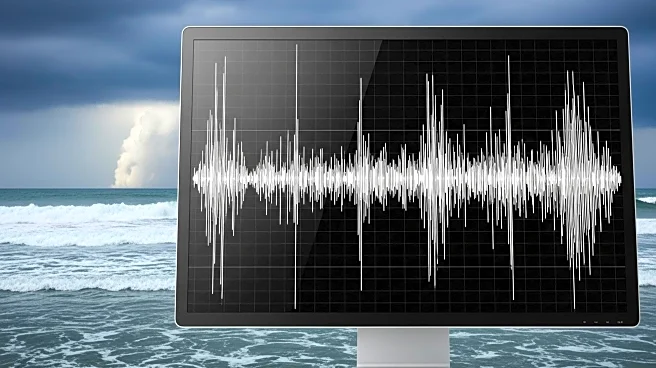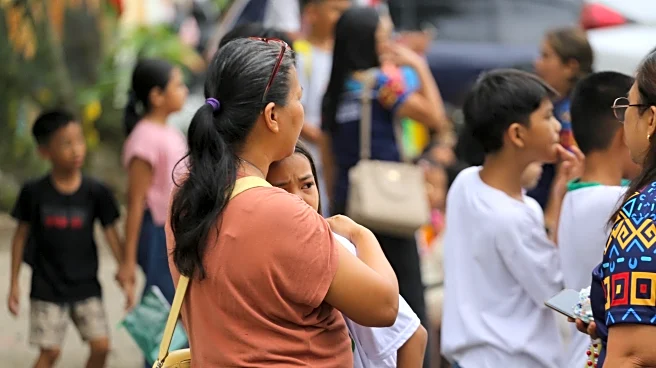What's Happening?
Two powerful earthquakes struck the southern Philippines on Friday, causing significant damage and prompting tsunami warnings. The first earthquake, with a magnitude of 7.4, resulted in at least six fatalities and triggered landslides. It was followed by a second earthquake of 6.9 magnitude, which also led to a local tsunami warning. Both earthquakes occurred along the Philippine Trench, with the first centered at sea near Manay town in Davao Oriental province. The Philippine Institute of Seismology and Volcanology reported that the second earthquake was a 'doublet quake,' occurring in the same area but with different epicenters. President Ferdinand Marcos Jr. announced that damage assessments were underway and that rescue and relief operations would be deployed when safe.
Why It's Important?
The earthquakes highlight the vulnerability of the Philippines to natural disasters, given its location along the Pacific Ring of Fire. The immediate impact includes loss of life, injuries, and structural damage, which could strain local resources and require significant government intervention. The events underscore the importance of disaster preparedness and response strategies in the region, which frequently experiences earthquakes and typhoons. The potential for further structural damage from aftershocks or subsequent earthquakes remains a concern, affecting both public safety and infrastructure stability.
What's Next?
Authorities are closely monitoring the situation for potential aftershocks and further seismic activity. The government is preparing to deploy rescue teams and relief operations as soon as conditions allow. Local communities are advised to remain vigilant and follow safety protocols, especially in coastal areas where tsunami warnings were issued. The ongoing assessment of damage will inform future disaster response strategies and infrastructure improvements to mitigate the impact of similar events.
Beyond the Headlines
The earthquakes may prompt a reevaluation of building codes and disaster preparedness measures in the Philippines. The events could lead to increased investment in early warning systems and community education programs to enhance resilience against natural disasters. Additionally, the psychological impact on affected communities may require long-term support and recovery efforts.












